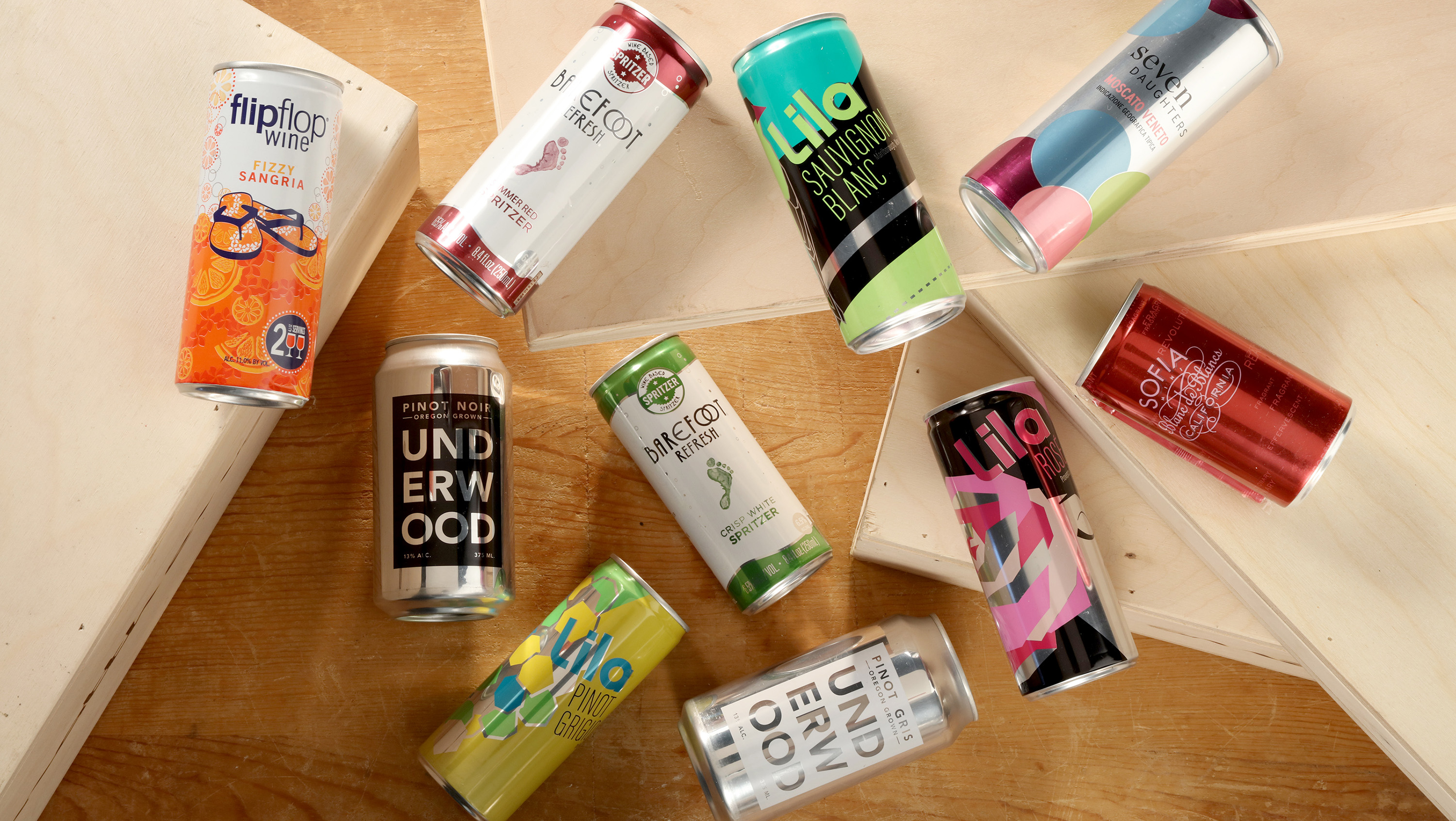Cans Of Wine Are On The Rise And Can Get You Very, Very Drunk
Cans of wine seem to have an implicit advantage ahead of bottles of wine: lightweight, unbreakable, portable, easy to open. As a result, as Forbes notes, although retail U.S. wine sales were flat between June 2017 and June 2018, "sales of wine in boxes rose by 7 percent and sales of wine in cans jumped a whopping 43 percent." USA Today says that Nielsen points to an even bigger rise in sales, to the tune of "a whopping 125.2 percent increase in sales of canned wine alone in the past year. Sales went up to $14.5 million from $6.4 million the previous year."
Quartz points to several reasons for the rise in can popularity: Cans make the sometimes intimidating world of wine easier to access, quoting a sommelier who says that thanks to cans "he's seen a younger audience for wine emerge, one that is less intimidated by the traditional formality surrounding wine." That portability is a major factor, especially poolside and other places where breakable bottles are verboten (and who among us hasn't been stuck with a wine bottle and no opener?). Canned wine manufacturers now range from the omnipresent Barefoot to the Whole Foods-housed Presto sparkling, for fans of a variety of price ranges and varietals.
But cans of wine do have a disadvantage: They're much harder—nay, impossible—to close. So once you've opened a can of wine, you probably will end up drinking the whole thing. And if it's temperature-sensitive, like a white or a sparkling, you may actually do so faster than you would a similar wine from a glass—even though cans typically hold 375 ml, or 12 ounces, equal to three standard 4-ounce pours. And this speaks nothing of tallboy wine cans, which are almost the equivalent to a 750 ml bottle. Deceptive... and dangerous! The best practice may be to open the can and immediately share with friends, to avoid chugging an amount equal to several glasses of wine in under an hour.
